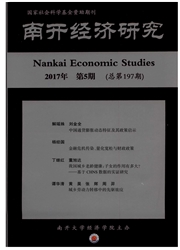

 中文摘要:
中文摘要:
2005年汇改后,人民币汇率形成机制发生重大变化,人民币汇率的波动幅度明显加大,央行干预难度也随之加大,尤其是在2003年至2008年人民币面临升值压力的背景下,短期投机资本频繁进出,对央行干预形成新的挑战。为此,本文基于外汇市场异质性交易者的假设,运用行为金融理论,构建了包含央行干预的汇率行为金融模型,并采用计算机模拟技术,对央行不同干预方式的有效性进行分析。在此基础上,提出在人民币汇率形成机制市场化改革进一步深化的背景下,央行应采取的干预策略。认为:未来央行干预应遵循一定的干预规则,并渐进放开波动区间,同时通过干预有效地引导市场预期,从而提高干预的效果。
 英文摘要:
英文摘要:
The RMB exchange rate formation mechanism transforms significantly after the 'reform' ,together with distinct fluctuations in RMB exchange rate,Which gives more requests on central bank intervention. Based on heterogeneity expectation of foreign exchange market traders ,This paper constructs a financial model with central bank intervention from the behavior of the financial perspective, and analysis effectiveness of central bank intervention and intervention strategies in use of computer simulation technology,suggested that the central bank intervention follow certain rules of intervention ,carefully grasp the intervention band and guide market expectations effectively when the RMB exchange rate mechanism market---oriented reforms advance.
 同期刊论文项目
同期刊论文项目
 同项目期刊论文
同项目期刊论文
 期刊信息
期刊信息
